The island of Ortigia constitutes the oldest and most authentic portion of the city of Syracuse, representing an urban core that is small in size but steeped in a deep and complex cultural history. The historical texture of Ortigia unfolds in an intricate narrative spanning different eras and civilizations. Since the time of the Bronze Age, the island has been a hub of commercial and cultural exchange of considerable significance for such peoples as the Greeks, Romans, Byzantines, Arabs and Spaniards. Today it is a locality with a vibrant and warm character, an idyllic place for a stay filled with history, culture and rest. This island is deeply embellished with historical monuments that tell the story of past eras: from the sumptuous Duomo to the majestic presence of the Temple of Apollo, from the evocative Fountain of Arethusa to the austere charm of the Maniace Castle. Here are six sites to see during a stay in the heart of Syracuse, on the island of Ortigia.
The elegant Baroque facade of Syracuse Cathedral, located in the beautiful Piazza del Duomo, one of the most beautiful squares in Italy with its elegant, white Baroque palaces, hides within it the Temple of Athena, one of the most famous and best-preserved Doric-style monuments in Sicily. This Greek temple, which still has many of its peristyle columns and parts of the cella walls, was commissioned by the tyrant of Syracuse, Gelon, in 480 bc to commemorate his victory at Imera against the Carthaginians. During the 6th century AD its parts were incorporated into a church, overlapping the original temple structure. The Byzantines built solid walls between the columns and opened eight arches on the cell walls, thus transforming the temple into a three-aisled Christian basilica dedicated to the Virgin Mary. Later, during Arab rule in the 9th century, the building was probably used as a mosque, while in the 12th century, under Norman rule, it became a Christian church again. Passing the staircase and the imposing Doric columns, one finds oneself in a sober and solemn interior divided into three naves housing several works of art including a painting depicting Saint Zosimus, attributed to Antonello da Messina.
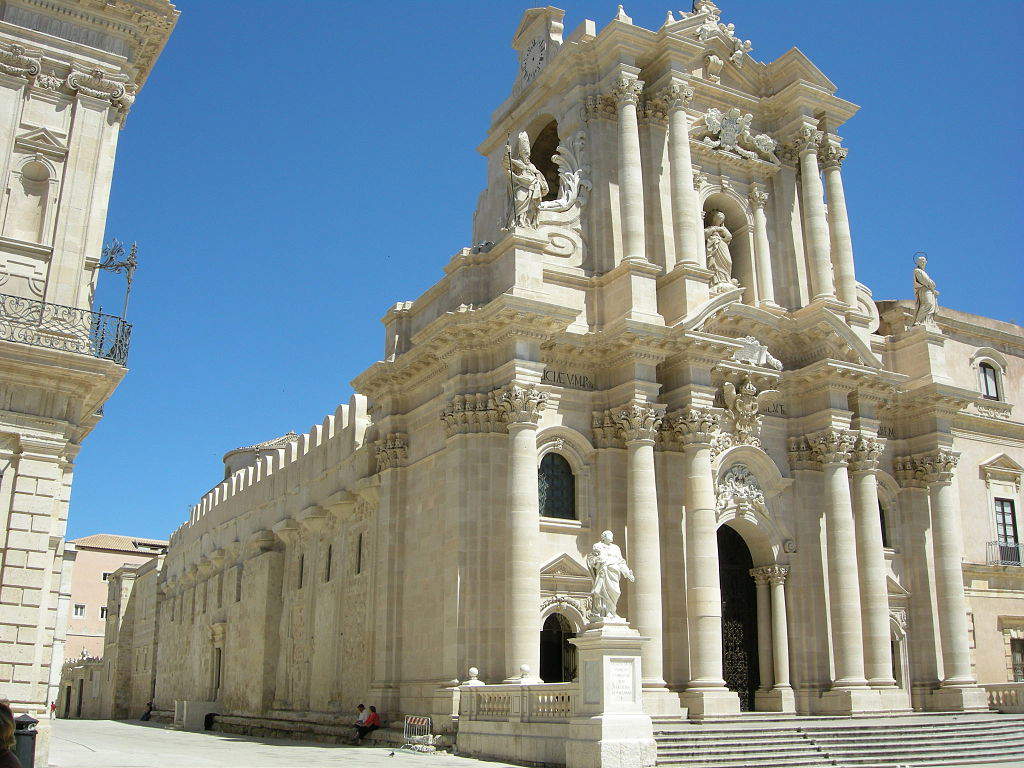
The building of the Temple of Apollo dates back to the early decades of the 6th century and is now the oldest example of Doric architecture found in Sicily. It, too, was initially converted into an early Christian church, later assuming the role of a mosque during the Arab period, and then was transformed into a basilica under Norman rule. The architecture of the Temple of Apollo is notable for its revolutionary nature, as this structure marks a definitive shift from the building style based on wooden structures to one that embraces the use of stone, in this case “jurgiulene” stone, as the predominant material. The temple consisted of 46 monolithic columns, with six front columns arranged in two rows and seventeen side columns, and its identification as a place of worship dedicated to Apollo has been confirmed thanks to an inscription located on a step of the eastern plinth which reads “Kleomede made for Apollo (the temple), the son of Knidieidas, and raised the colonnades, beautiful works.”
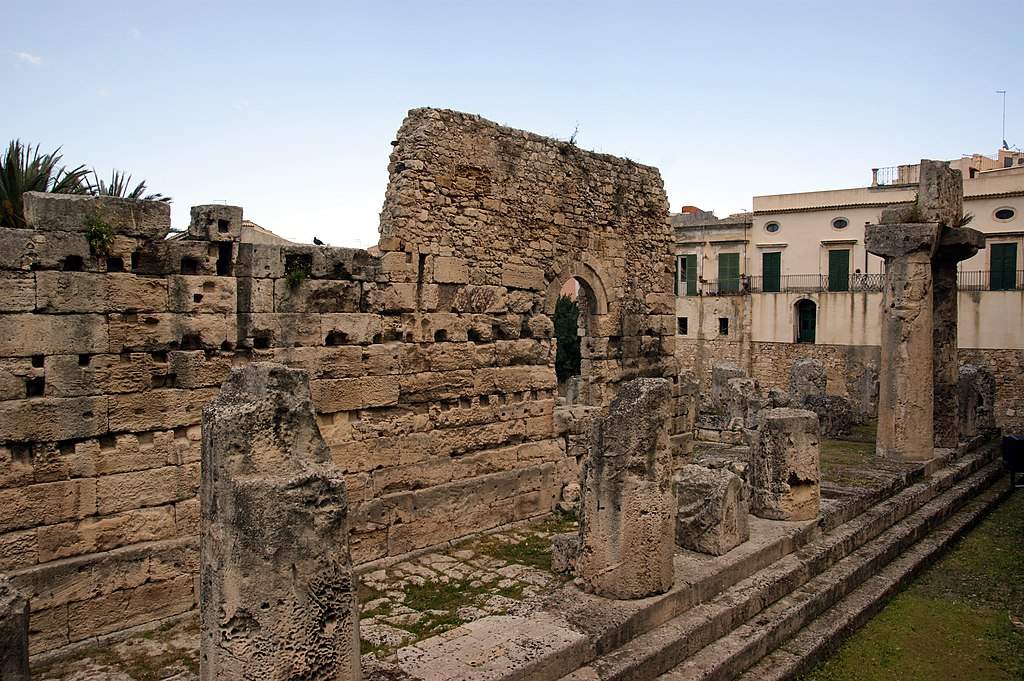
Palazzo Bellomo is a fascinating historic building located in the heart of Syracuse: among the city’s most important sites, it represents a treasure trove of art and architecture rooted in Syracuse’s glorious past. The building was built in the 13th century and subsequently underwent several renovations and extensions over the centuries. Palazzo Bellomo owes its name to the Bellomo family, one of the aristocratic families that owned it throughout its history. The architecture of the palace has two distinct construction phases, the Swabian and the Gothic, including elements in various styles that testify to the historical evolution of the building and the city itself. Palazzo Bellomo houses the Regional Gallery, which houses a vast collection of works of art spanning a period from the 12th to the 18th century. One of the most famous masterpieces housed inside the palace isAntonello da Messina’s Annunciation. Also, works by Antonello Gagini, Francesco Laurana, Mario Minniti, Guglielmo Borremans and several others. Palazzo Bellomo is, in essence, a historical jewel that embodies the artistic and cultural richness of Syracuse.
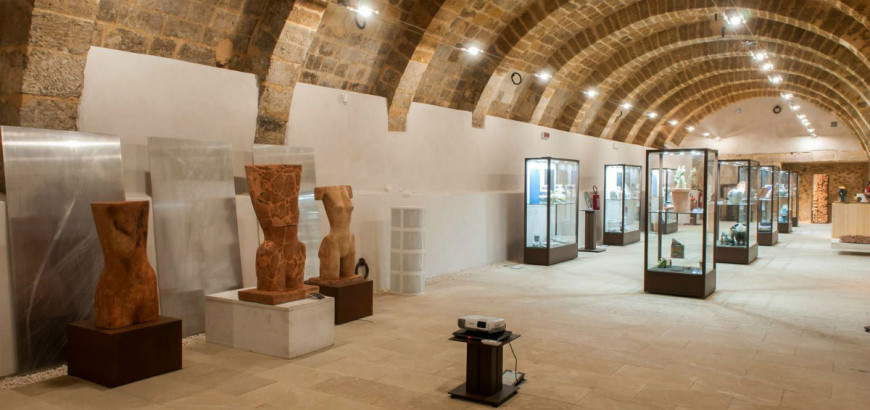
On the island of Ortigia lies a crystal clear body of water called the Fountain of Arethusa: a freshwater spring that holds a particular mythological story. It is said, in fact, that Arethusa was a young nymph, in the service of Diana (goddess of hunting and wilderness) and that one day, while standing by a river in Arcadia, she attracted the attention of the river god Alphaeus, who fell madly in love with her. The maiden, however, did not like such attentions and, while running away, asked Diana for help, who transformed the nymph into a spring of water. Alphaeus, despite this, never resigned himself until the gods took pity on him and Jupiter turned him into an underground stream that feeds, even today, the Arethusa spring.
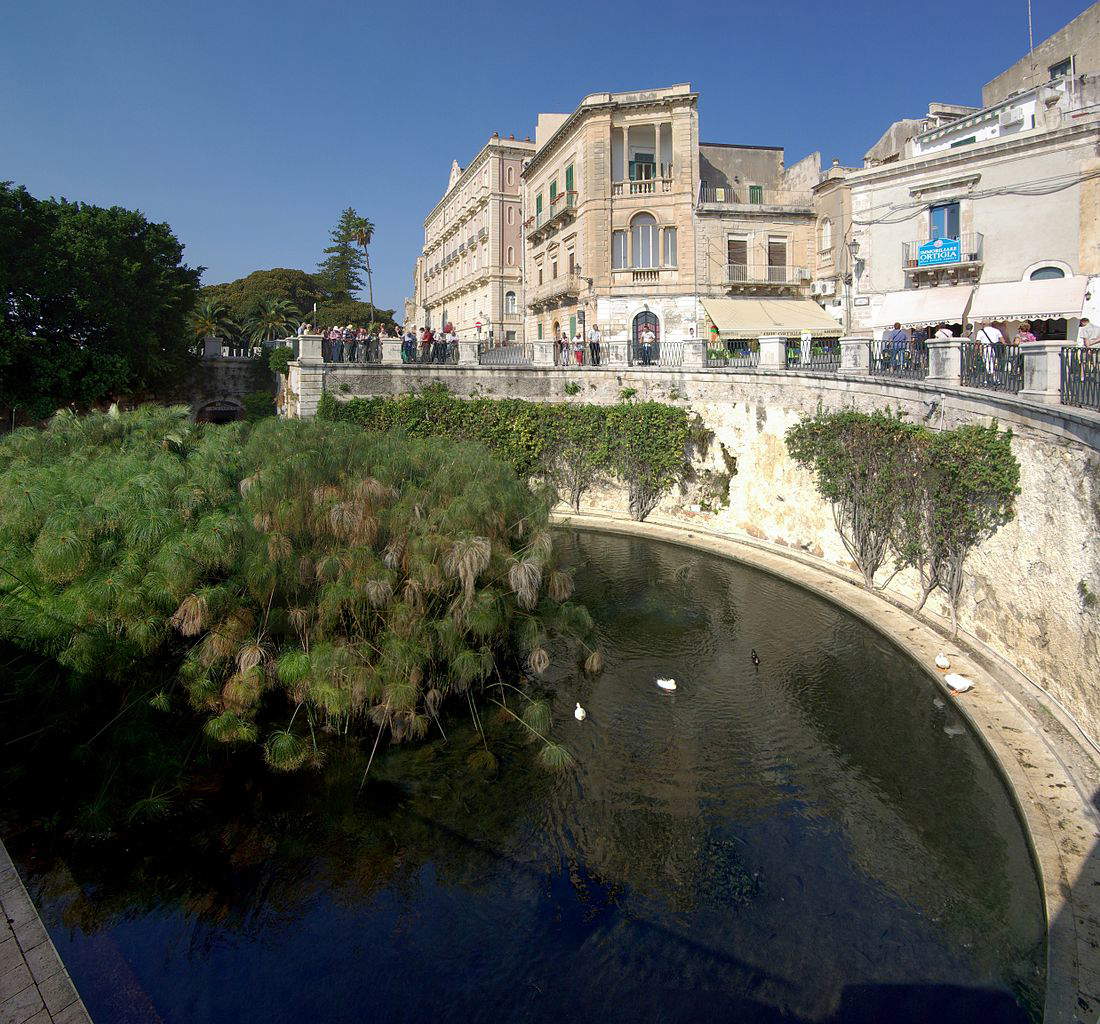
A few minutes’ walk from the Arethusa spring is the Maniace Castle erected by Frederick II of Swabia as a fortress to protect the port and city of Syracuse. The project was assigned to the skilled architect Riccardo da Lentini, who completed this magnificent work between 1232 and 1240. As a tribute to the memory of the valiant Byzantine general George Maniace, known for recapturing the city from the hands of the Arabs in 1038, the palace was named after him, becoming the tangible symbol of Syracuse’s victory and strength. It appears as a sturdy square-shaped castle with perimeter walls and four cylindrical towers at the corners. The niches on either side of the portal were designed to hold bronze rams, while inside is a copy of the only original ram. Fine decorative elements, such as carvings of lions, a telamon, and a possible head of Frederick II, enrich the ribs of the vaults inside, and the limestone columns, with polygonal bases and decorated capitals, add further charm through depictions of country scenes, human figures, and snakes.
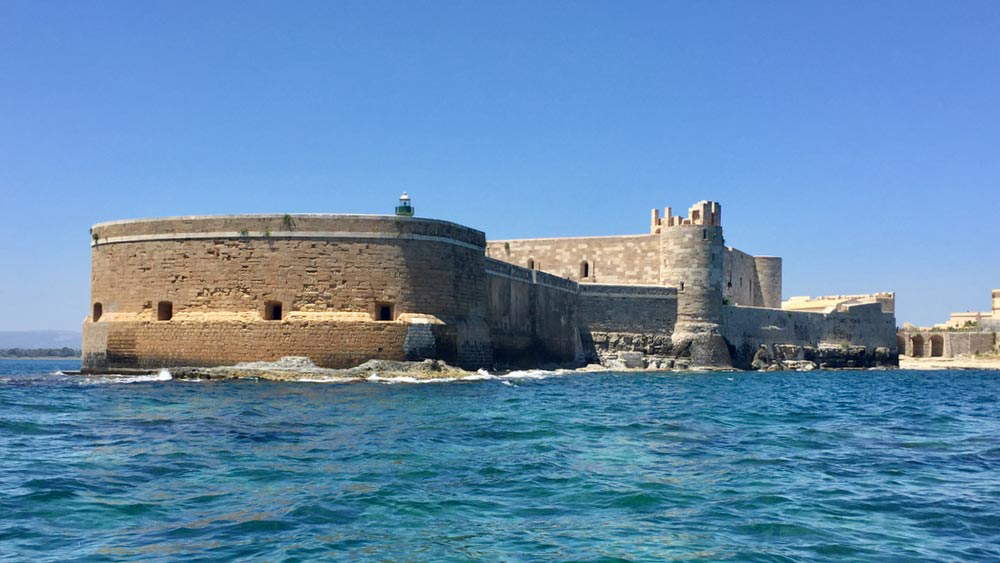
In the heart of Ortigia lies an ancient Mikvè, a Jewish ritual bath dating back to the 6th century AD and considered one of the oldest in Europe. Located 18 meters below ground and fed by spring water, it was discovered in 1989 during renovation work on the palace. Its rock-carved basins, pillars and vaults reveal aspects of community life, including female rituals and images. Indeed, the mikveh has always had the task of removing ritual impurity, linked to contact with the sacred rather than evil, and the act of immersion in these waters represents a renewal necessary to restore ritual purity. The Mikvè of White House is a precious heritage that offers a deep look into Jewish spirituality and traditions. This place succeeds in connecting the traveler to an ancient community that honored the mikveh as a ritual of purification and spiritual renewal.
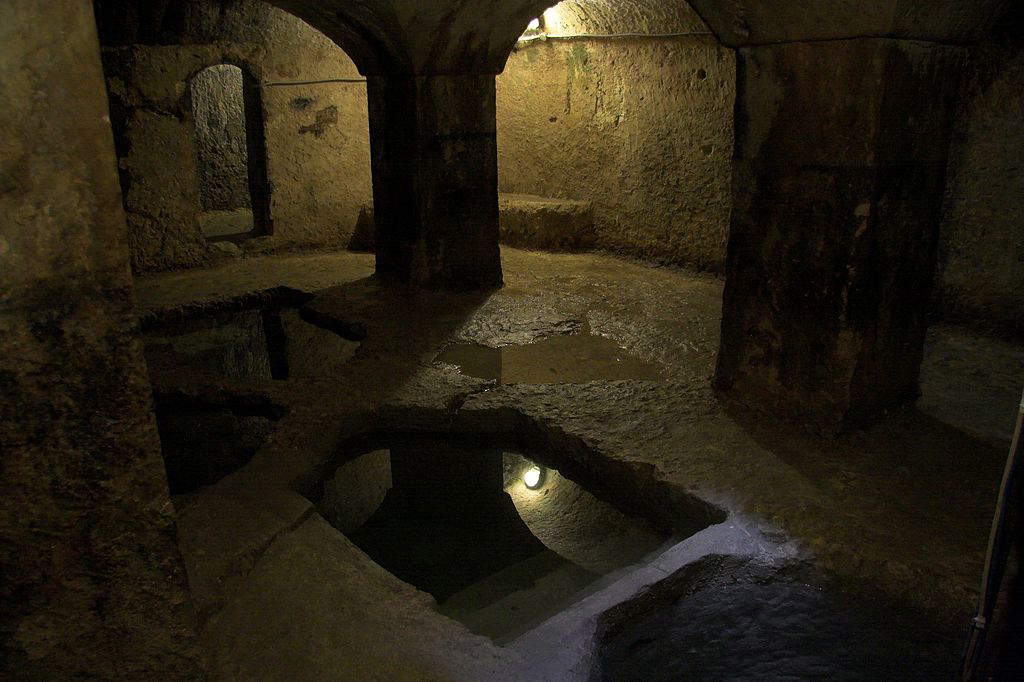
The church of Santa Lucia alla Badia is one of the most interesting places of worship in Syracuse. This church is famous mainly for having housed until 2020 one of the most important artistic masterpieces of the Sicilian seventeenth century, Caravaggio’s The Burial of Saint Lucia, later returned to the church for which it was painted, that of Santa Lucia al Sepolcro in the Borgata neighborhood. The church has a history dating back to the 15th century, although the present building was constructed between 1695 and 1703, after the 1693 earthquake razed the previous construction. The facade represents one of the most interesting Baroque elevations in the city, while the single-nave interior features scenic early 18th-century altars.
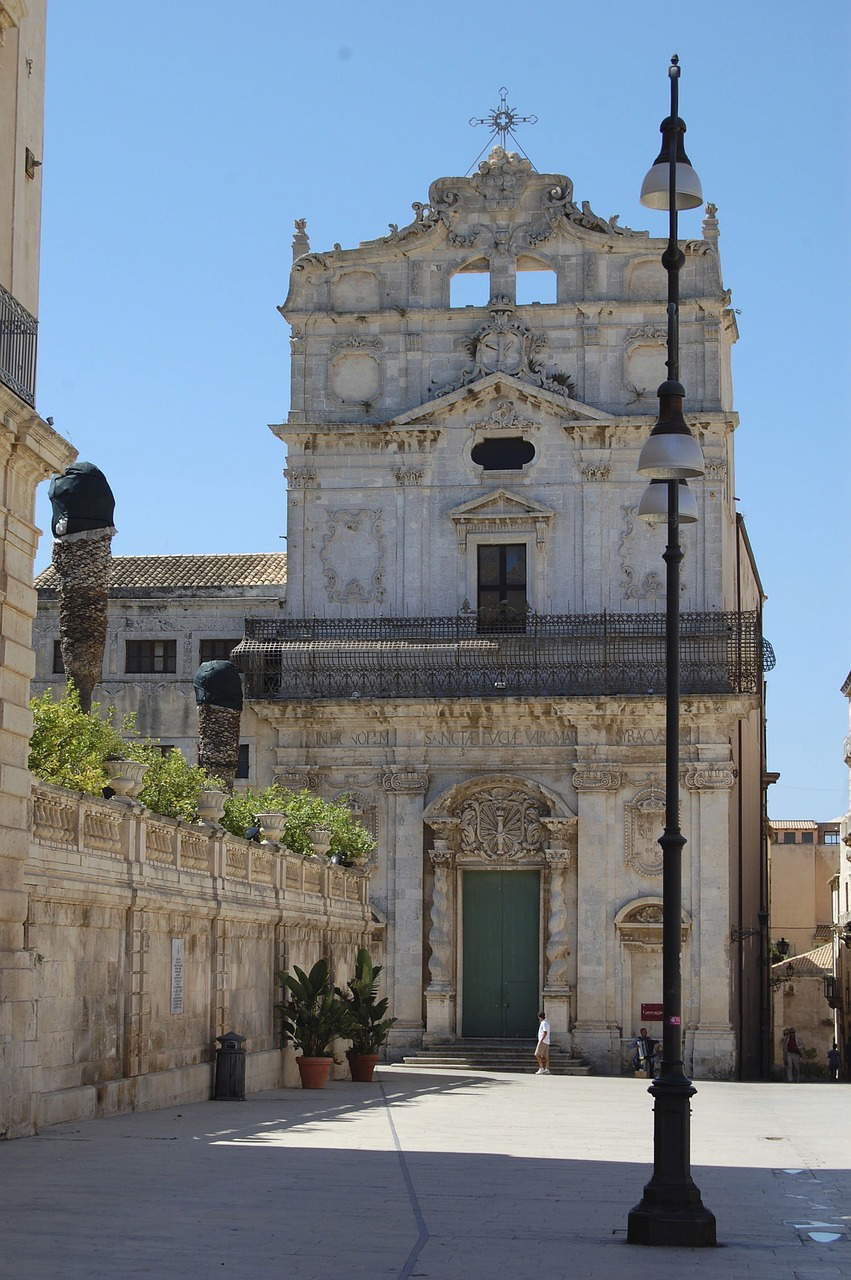
An elegant historic home located in Piazza del Duomo, Beneventano del Bosco Palace is an outstanding example of Baroque architecture. Rebuilt after the 1693 earthquake that destroyed the previous building, owned by the Arezzo family (from which the adjoining Palazzo Arezzo della Targia takes its name), it became the property of the Beneventano del Bosco family in 1778. The building stands majestic and imposing, with a fascinating facade that captures visitors’ attention from the first glance. The wrought-iron balconies, elaborately framed windows, and ornamental sculptures contribute to an atmosphere of refined splendor. The interior of Beneventano del Bosco Palace is equally fascinating. Its elegant halls are embellished with period stucco and decorations, representing a glimpse of aristocratic life over the centuries. The palace has gone through several stages of restoration and conservation, which has allowed it to preserve its original charm and historical beauty.
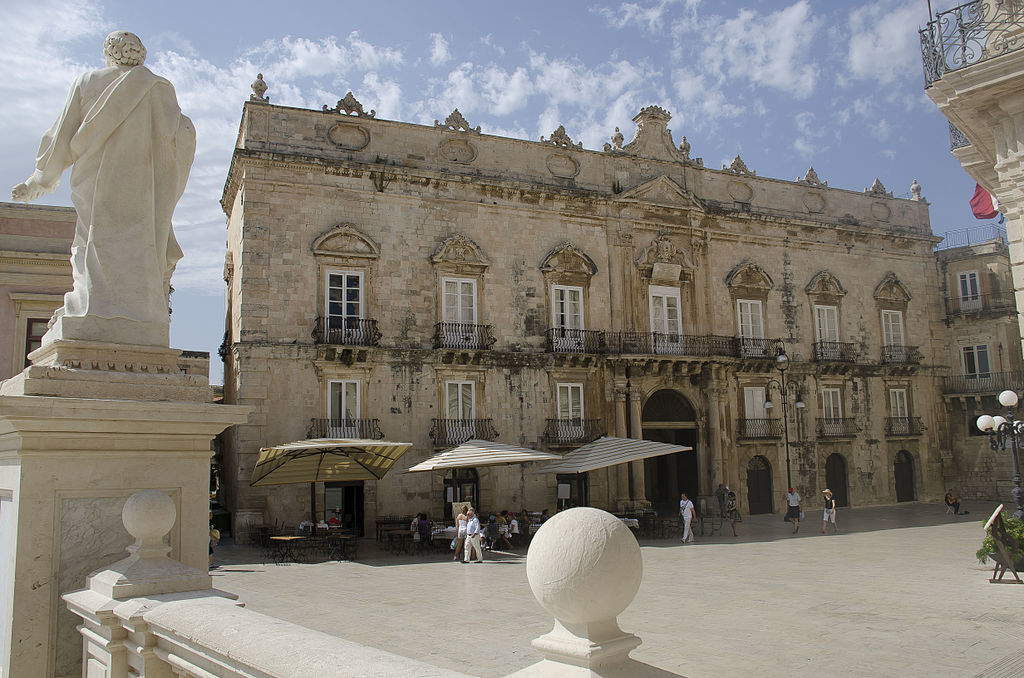
The Church of St. John the Baptist, called “church of San Giovannello” by the inhabitants, is one of the historic churches of Syracuse: a house of worship of medieval origin, it is shown with its facade dating back to 1380 (the church was built on the remains of an early Christian basilica from the 4th century). The facade of the church is relatively simple, but has interesting decorative elements, such as the 15th-century portal and gradne rose window. The church’s special feature is that the interior is uncovered: because of this it was long used as a theater and auditorium before being reopened for worship.
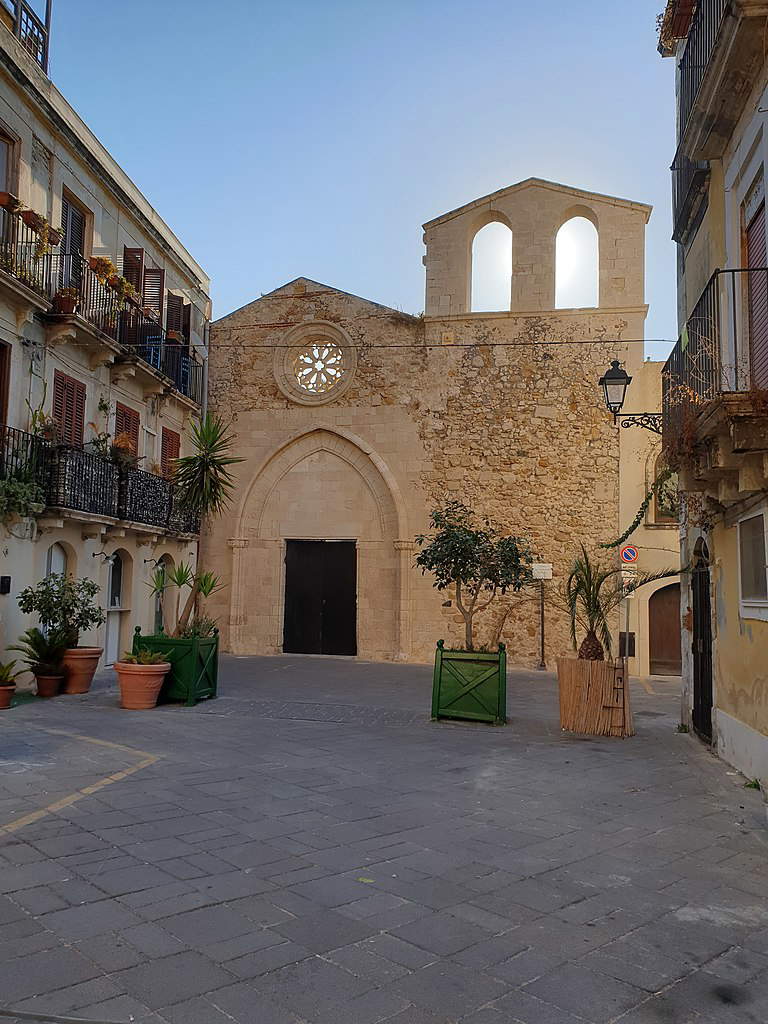
The current seat of Syracuse City Hall, Palazzo del Vermexio is an imposing historic building, a notable example of civil and administrative architecture in the context of the city and has played a significant role in local history, having been the seat of the city Senate and other important institutions since ancient times. Located in Cathedral Square and built in the 16th century, the Palazzo del Vermexio is named after the architect who built it, Giovanni Vermexio. The palace’s architecture is characterized by a Renaissance style on the first floor and Baroque elements on the upper floor, and features an imposing facade with ornate windows and architectural details that reflect the building’s importance and authority. The Palazzo del Vermexio has undergone several renovations over the centuries, but has managed to preserve much of its historical and architectural charm.
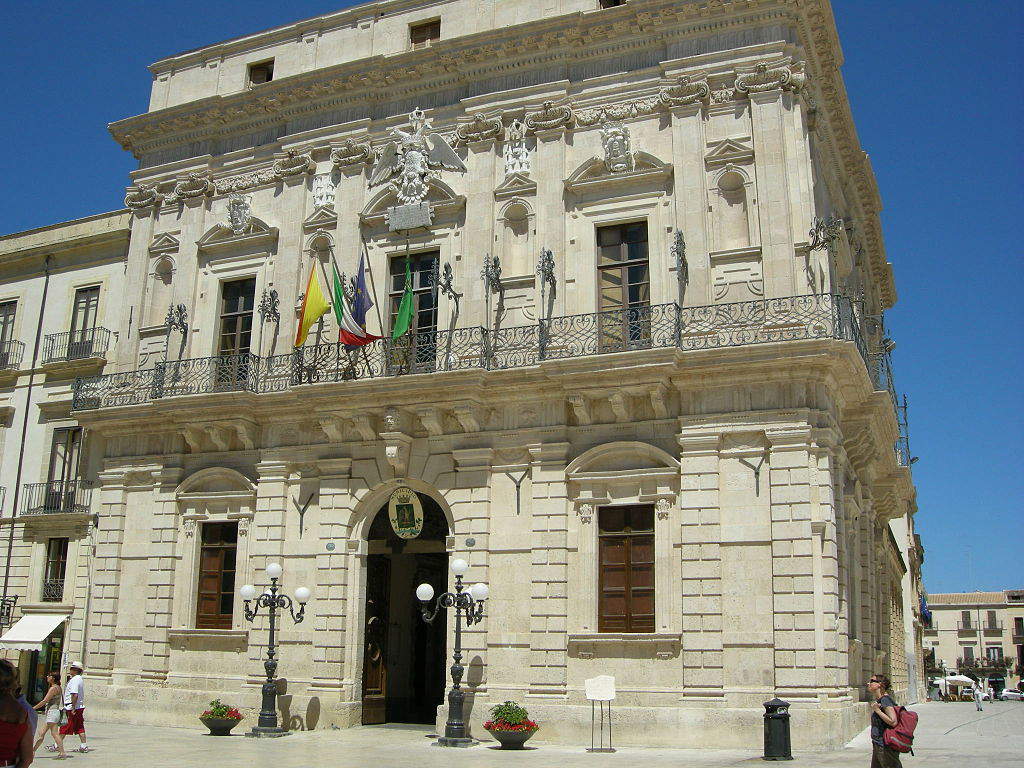
 |
| Ortigia, what to see: 10 places in the heart of Syracuse |
Warning: the translation into English of the original Italian article was created using automatic tools. We undertake to review all articles, but we do not guarantee the total absence of inaccuracies in the translation due to the program. You can find the original by clicking on the ITA button. If you find any mistake,please contact us.